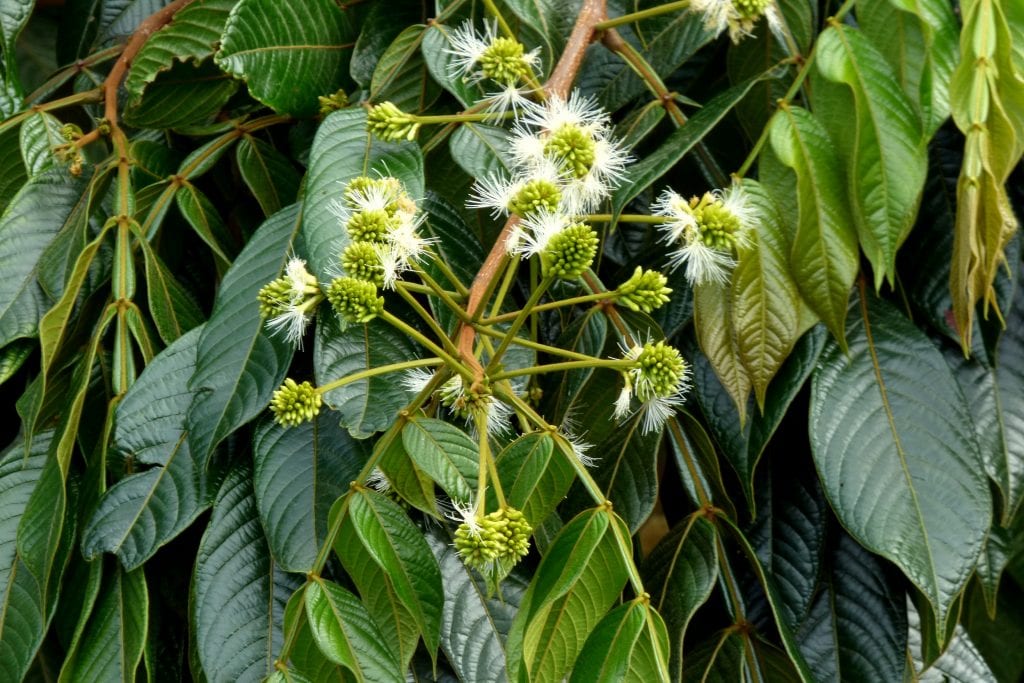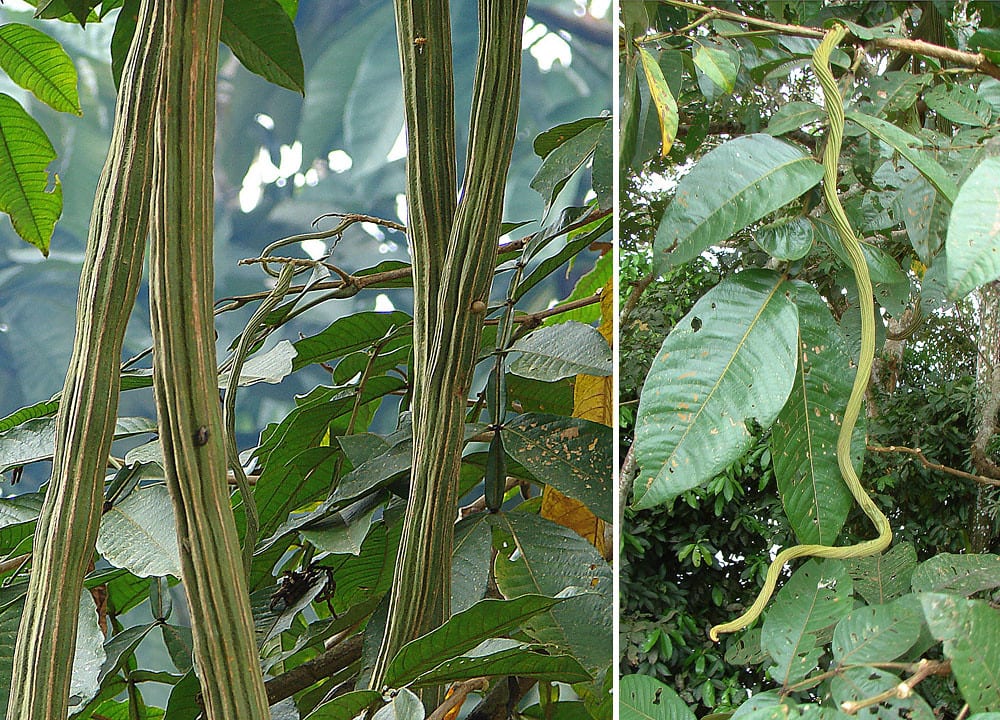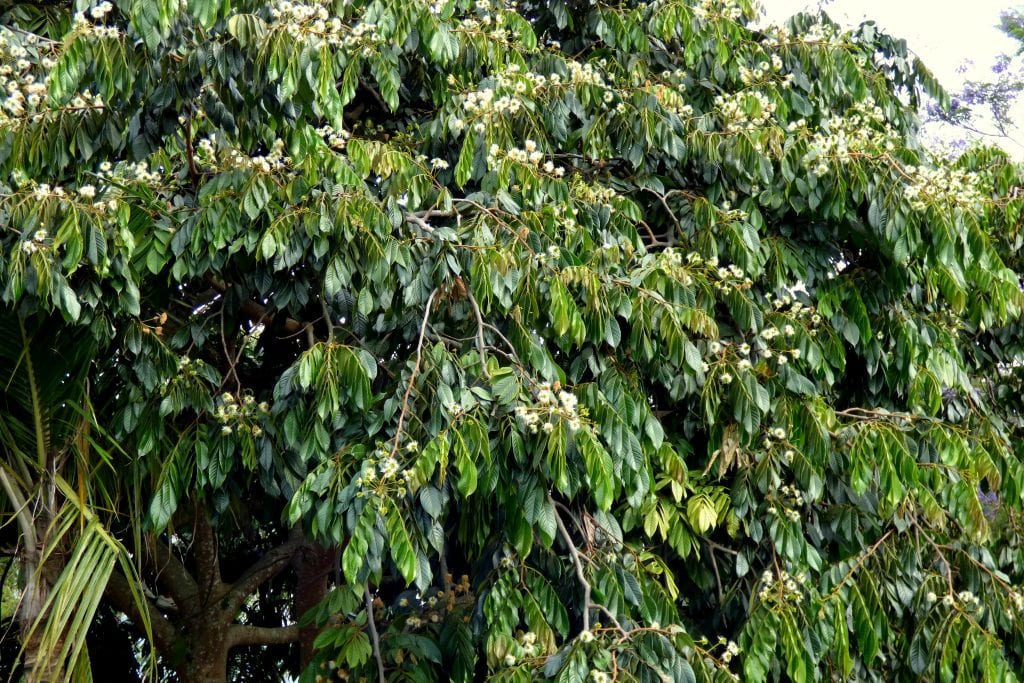
Image - Wikimedia / Alejandro Bayer Tamayo
La wow It is a beautiful plant, of tropical origin, that provides a pleasant shade to all those who want to enjoy the outdoors in the garden. But in addition, it can satisfy hunger since its seeds are edible, yes, not freshly picked from the tree.
It is an ideal plant for mild climates, but it can also be had in an interior patio or similar. Learn more.
Origin and characteristics of the guama

Image - Flickr / Mauricio Mercadante
It is a Caucasian tree of the family of the legumes originally from America, specifically from Mexico to South America, whose scientific name is inga edulis. It receives the names of guama, jinicuile, cuajiniquil, cajinicuile, aguatope or guaba, and reaches a height between 4 and 30 meters, with a trunk diameter of up to 1 meter. The roots are shallow and very divided.
Its crown is wide and flattened, composed of long branches from which alternate, pinnate, lanceolate leaves grow 18 to 30 cm long. The flowers are grouped in white pedunculated spikes. The fruit is a legume up to 1 meter long by 2cm wide that contains numerous dark-colored, rounded seeds.
What are their cares?
If you want to have a specimen of guama, we recommend you take care of it as follows:
Location
It is a plant that, as long as the weather is good, that is, it is tropical warm or at least temperate, must be abroad, in a sunny or partially shaded exposure.
Earth
- Garden: grows in soils rich in organic matter and with good drainage.
- Pots: fill with a mixture of mulch and 30% perlite. You can get the first here and the second here.
Irrigation
Irrigation must be frequent but without being daily. In general, with an average of 3 irrigations a week during the hottest season, and an average of 1 to 2 weekly irrigations the rest of the year, it could be more than enough for your inga edulis grow up healthy.
Subscriber
It is very important fertilize it from time to time during spring and summer, since otherwise it could have a little deficient development and / or growth due to the lack of nutrients. Therefore, to avoid it, we recommend paying it with organic products, such as compost, guano (for sale here), the manure of herbivorous animals or the vermicompost (for sale here), among others, once a month.
Multiplication

Image - Flickr / Dick Culbert
The guama multiplies by seeds in spring. Let's see how to proceed:
- First, put the seeds in a strainer, and this in a glass of boiling water for 1 second.
- Then, put the seeds in a glass of water at room temperature for 24 hours.
- After that time, keep the seeds that have sunk (the others most likely will not germinate, although you can sow them in a separate seedbed just in case, since they are not uncommon for surprises).
- Plant them in a seedling tray (for sale here) with soil for seedlings (for sale here).
- Then, bury them a little with earth, so that they are not exposed directly to the sun.
- Finally, water and place the seedbed outside, in semi-shade.
If all goes well and the earth is kept moist, will germinate in about 15 days.
Planting or transplanting time
En spring. If you have it in a pot, move it to a larger one with drainage holes at 2 or 3 years.
Pruning
Remove dry, diseased, broken, or weak branches in the fall or late winter. Don't forget to disinfect pruning tools before and after use to prevent infection.
Rusticity
It is grown in tropical climates with a marked dry season (hence it is deciduous). But as it also lives in some parts of the South American Andean region, it can surely withstand weak frosts down to -2ºC. Anyway, if you want to do experiments, we recommend buying seeds before you plant.
What uses is given to guama?
Ornamental
It is a very decorative tree, ideal for medium to large gardens that need a bit of shade. In addition, like all legumes, their roots fix nitrogen to the soil, something that is very useful to other plants since this nutrient is essential for growth to take place.
Edible
Legumes contain approximately twelve seeds, which they can be eaten cooked in salted water. They taste similar to chickpeas.
Other uses
- Wood: used to make poles, as firewood and as charcoal.
- Reforestation: being very resistant, it is a very interesting plant to reforest lands in their places of origin.
Where to buy inga edulis?

Image - Wikimedia / Alejandro Bayer Tamayo
Outside of its origins, it is not a very common plant and therefore it is not easy to find either. However, you can search online stores or nurseries.
What did you think of the guama?